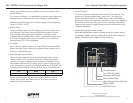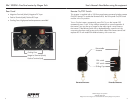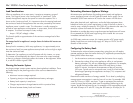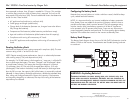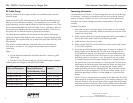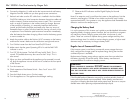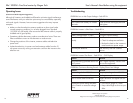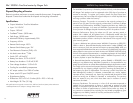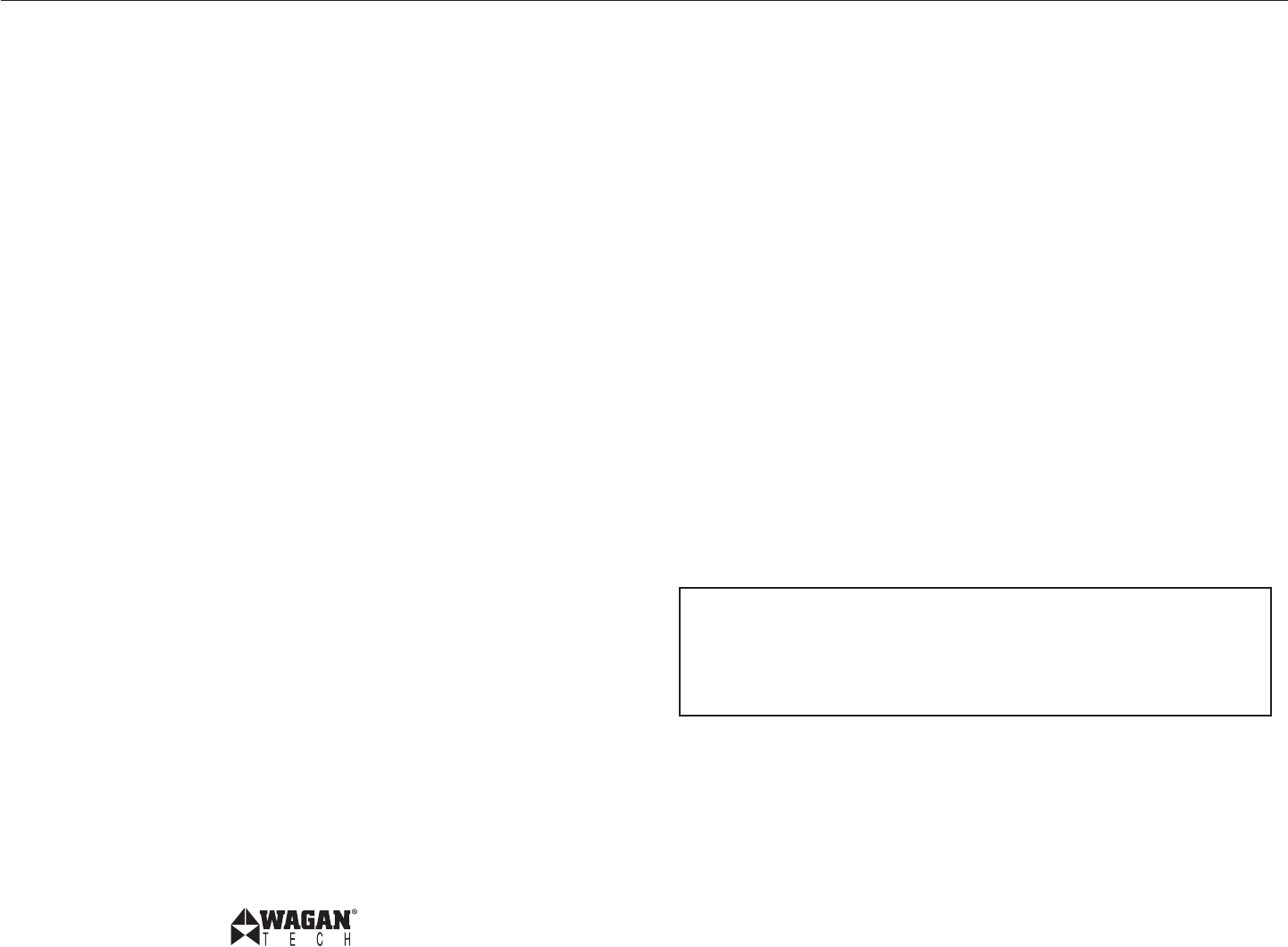
Elite
™
5000W—Pure Sine Inverter by Wagan Tech
13
www.wagan.com
User’s Manual—Read before using this equipment
©2012 Wagan Corporation
All Rights Reserved.
Wagan Tech and wagan.com are trademarks used by Wagan Corporation.
14
6. Connect the Negative (−) cable end to the inverter terminal and battery
Negative Terminal. Make sure you have good, secure connections.
7. Recheck and make sure the DC cable fuse is installed in the fuse holder.
CAUTION: Making an initial connection between the positive cable end
and the inverter’s positive terminal may cause a spark. This is a normal
and is a result of capacitors in the inverter starting to charge. Because
of the possibility of sparking, it is extremely important that both the
inverter and the battery bank be positioned away from any source of
flammable fumes or gases. Failure to heed this warning can result in fire
or explosion. Do not make the positive terminal connection immediately
after the batteries have been charging. Allow time for the battery gasses
to vent to outside air.
8. Attach the positive cable to the Positive (+) DC connector on the battery
and then the inverter. Make sure the connections are tight and secure.
9. Turn ON the inverter from the Front Panel On/OFF Switch
10. Make certain that the green Operating LED is lit and the FAULT LED
indicator is not lit.
11. Turn OFF (0) the inverter. The Fault LED may briefly “flash”. This is
normal. The audible alarm may also sound a short “chirp”. This is
also normal.
12. When you have confirmed that the appliance to be operated is turned
off, plug the appliance into one of the two AC outlets on the front panel
of the inverter.
13. Turn the inverter on.
14. Check operation of the Remote Switch – Press “Lock” to turn Off
the inverter.
15. Press the Unlock button to turn On the inverter.
16. Turn the appliance on. The appliance should begin working.
17. Observe the LED indicators and the Digital Display for Normal
operation.
Note: If an extension cord is used from the inverter to the appliance, limit the
extension cord length to 100 feet or less. Make sure that the cord is safety
approved and AWG 14 or greater to carry the appliance load. Remember that
extension cords are for temporary use.
Charging the Battery Bank
It is not the purpose of this inverter user’s guide to provide detailed information
regarding battery charging systems. However, the user should try to augment
any stationary inverter charging system with either wind power or solar
power. These can continue to operate during power outages and they also
reduce recharge time. For mobile or marine charging systems, a higher rated
alternator may be necessary to charge a battery bank.
Regular Loss of Commercial Power
If the inverter system is used during commercial power outages that occur
daily, configure the charger system to replace energy during the time that
commercial power is available.
Replacement of battery energy always requires more than was taken from
the battery (typically 30 percent more). Follow battery manufacturer’s
recommendations for maximum charging current.
Warning:
There is danger of explosion. do noT connecT or disconnecT
charger cables direcTly afTer baTTery discharge or recharge–make
sure ThaT The baTTery bank area is Well venTed before aTTaching or
removing cables.
If the flooded lead acid batteries are used, be sure that periodic checks of
battery electrolyte levels are accomplished. Follow battery manufacturer’s
instructions in keeping the electrolytes at the proper level. Be sure to use pure
distilled water when replacing evaporated electrolyte liquid.





